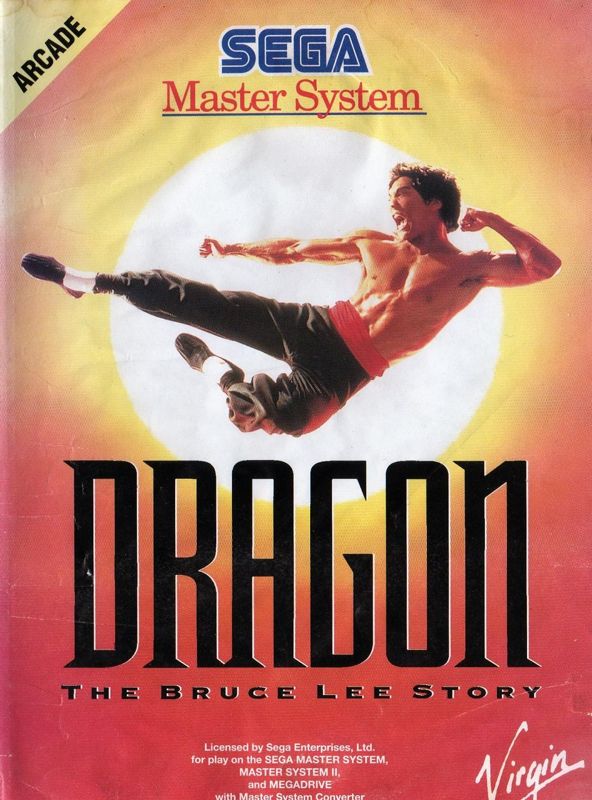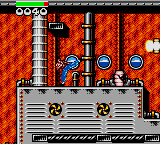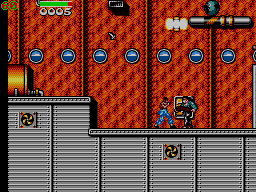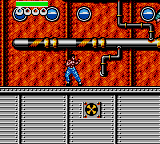Retro Replay Review
Gameplay
Dragon: The Bruce Lee Story delivers a straightforward, side-scrolling martial arts experience that captures the spirit of its cinematic inspiration. Players take on the role of Bruce Lee, moving from left to right through a series of urban streets, temple interiors, and dojo showdowns. The controls are simple yet flexible: a single attack button combined with directional inputs produces distinct moves, ensuring that timing and position play as much of a role as reflexes.
(HEY YOU!! We hope you enjoy! We try not to run ads. So basically, this is a very expensive hobby running this site. Please consider joining us for updates, forums, and more. Network w/ us to make some cash or friends while retro gaming, and you can win some free retro games for posting. Okay, carry on 👍)
At the heart of the action is Bruce’s attack system. Pressing forward plus attack initiates a powerful punch, while holding up yields an impressive roundhouse kick and down triggers a quick low sweep. This design encourages players to experiment with positioning and to adapt their tactics on the fly when facing varied enemy types—ranged assailants, heavy hitters, or nimble acrobats.
Power-ups are sprinkled liberally throughout each stage, hidden in destructible crates or glowing orbs. Activating these bonuses not only restores health but can temporarily boost Bruce’s speed or increase the damage of his attacks, injecting moments of empowerment in an otherwise punishing journey. Learning to identify and prioritize these pick-ups is key to balancing offense and defense.
Boss encounters punctuate the levels with memorable showdowns that test everything you’ve learned so far. Each boss boasts a distinct pattern—whether a relentless karate master or a knife-wielding thug—and forces you to read openings, time dodges, and unleash combos with precision. While some may find the difficulty spikes steep, overcoming them provides a genuine sense of accomplishment.
Graphics
For a 1993 release on the 16-bit hardware, Dragon: The Bruce Lee Story impresses with its bright color palette and well-defined sprites. Bruce himself is instantly recognizable—the trademark yellow jumpsuit rendered in sharp pixel art—and enemy designs range from hooded gang members to nimble ninjas, each sporting unique silhouettes that help with quick visual identification in the heat of combat.
The backgrounds showcase diverse locales, from gritty Chinatown alleyways to serene temple courtyards. Parallax scrolling on certain stages adds a modest illusion of depth, while foreground objects like lanterns or market stalls break up the monotony and lend authenticity to each setting. The overall color schemes shift noticeably as the game progresses, offering a visual sense of journey and discovery.
Character animations are fluid enough to convey the power behind Bruce’s kicks and punches, with multiple frames devoted to each attack type. Special finishing moves and boss defeat sequences include brief but satisfying sprite flourishes—flaming kicks or shattered floorboards—that make every victory feel impactful. Though the frame rate occasionally dips during intense on-screen action, it rarely disrupts the flow.
Cutscene art appears between certain levels to advance the plot, using static illustrations overlaid with text. While these segments lack voice acting or dynamic movement, they help to break up the gameplay and keep the narrative on track. Overall, the graphical presentation strikes a solid balance between clarity and flair, even if it leans into the era’s limitations.
Story
Rooted in the 1993 biographical film, Dragon: The Bruce Lee Story loosely adapts key moments from Bruce Lee’s early life. The game begins with the startling revelation that Bruce was born in America, prompting him to explore unfamiliar territory. This premise provides the narrative thread that ties together each action-packed level.
As Bruce ventures deeper into his birthplace, he confronts a host of adversaries—from local gangs to shadowy martial artists—who challenge his quest for self-discovery. Though the story is conveyed in brief text scrolls rather than full cutscenes, it effectively establishes stakes: Bruce must prove himself, defend innocents, and ultimately honor his father’s legacy.
Boss battles function as narrative set-pieces, representing personal trials drawn from the film’s dramatic highlights. Whether facing a ruthless dojo master or rescuing a friend from captivity, each encounter feels motivated by Bruce’s larger journey rather than arbitrary level design. This cohesion helps maintain player investment from stage to stage.
While purists may note omissions or simplifications compared to the movie, the game’s narrative pacing suits its arcade-style structure. It delivers just enough context to give meaning to the action without slowing down the momentum. Fans of Bruce Lee’s life story will appreciate the respectful nods, and newcomers can follow along without prior knowledge of the film.
Overall Experience
Dragon: The Bruce Lee Story strikes a nostalgic chord for retro enthusiasts and martial arts fans alike. Its accessible controls, varied level design, and faithful thematic touches make for an engaging, if occasionally repetitive, side-scrolling beat ’em up. The challenge curve remains brisk throughout, demanding precise timing and stage memorization to succeed.
While some modern players might find the mechanics simplistic and the difficulty uneven, there’s undeniable charm in mastering Bruce’s signature moves and powering through hordes of adversaries. The game rewards persistence and offers enough variety—different environments, enemy types, and boss patterns—to keep gameplay from feeling stale.
Graphically, Dragon: The Bruce Lee Story holds up as a showcase of 16-bit artistry, with colorful sprites and dynamic backgrounds that evoke a bygone arcade era. The story, though streamlined, provides just enough narrative glue to justify Bruce’s journey and keeps players motivated to see the credits roll.
Overall, Dragon: The Bruce Lee Story is a solid pick for collectors and fans seeking a classic martial arts title. It may not redefine the genre, but it delivers a satisfying blend of action, style, and nostalgia—an experience worthy of anyone eager to step into the shoes (or the nunchaku) of the legendary Bruce Lee.
 Retro Replay Retro Replay gaming reviews, news, emulation, geek stuff and more!
Retro Replay Retro Replay gaming reviews, news, emulation, geek stuff and more!









Reviews
There are no reviews yet.